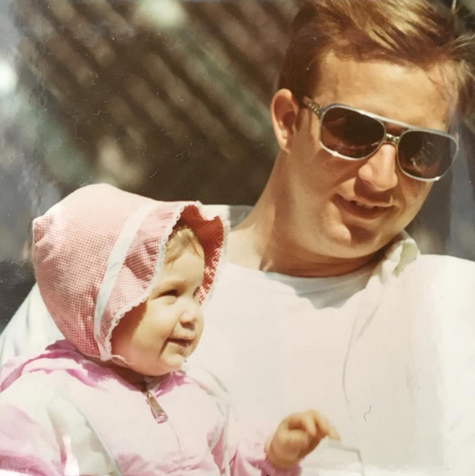Floyd Graham
Victim: Police Officers Fred Vacha Jr. and John Saccany
Case Summary
Cleveland, Ohio Police Officer Fred Vacha Jr. was executed by Floyd Graham for absolutely no reason other than the fact he was a police officer. At trial, Graham openly admitted he shot an unsuspecting Officer Vacha. Graham escaped the death penalty only because it was not an option in 1973. Officer Vacha left behind his wife, Mary Lou; his two-year-old-daughter, Tanya; and a son he never had the opportunity to meet. Officer Vacha’s son, Fred III, was born seven months to the day after his father’s death. Cop killer Floyd Graham is now regularly up for parole.
POLICE OFFICERS FRED VACHA JR.’S AND JOHN SACCANY'S STORY
UPDATE: Parole has been denied for cop killer Floyd Graham. Graham received the maximum 10-year continuance and will not have another hearing until February 2033. Thank you to everyone who submitted a petition and helped in the effort to get justice for Police Officer Fred Vacha Jr.Justice has been served. Rest In Peace Officer Vacha. You will never be forgotten.
A Great Husband, Father, And Police Officer
Cleveland Police Officer Fred Vacha Jr. liked music, rode his motorcycle to relax, and went fishing with his on dad on his days off. His greatest joy was being a husband and father. He doted on his two-year-old daughter, Tanya and was excited for the arrival of his first son. On June 19th, 1973, Officer Vacha, age 25, kissed his wife, Mary Lou, who was two months pregnant, and his daughter, Tanya, goodbye. He then headed off to work to protect the citizens of Cleveland, Ohio. Officer Vacha could never have imagined he would never see his family again.
Officer Vacha’s badge number was 2373 and he had been with the Cleveland Police Department four years. He was a dedicated police officer and was passionate about helping others. Officer Vacha and his partner John Saccany were members of the Impact Task Force, a federally funded unit organized to help curb violence in high crime areas. Officer Vacha loved his job and jumped at the opportunity to be on the Impact Task Force so he could do more to help make the city safer.

The United States Marine Corps.
A Senseless Shooting
At 1:15 A.M., Officer Vacha and his partner, Officer John Saccany, were on patrol when they noticed a suspicious man wearing a yellow robe and brown beret walking down the street. They had seen the same man several times earlier during their shift and they believed he was carrying a handgun. Officer Saccany, who was driving the cruiser, pulled up 12 to 15 feet behind the man. Officer Vacha, who was in the passenger seat, rolled down his window. Officer Vacha called out, “Hey, mister, hold it; I want to talk to you.” The man, who was now 10-feet away, whirled around and immediately started firing bullets at the Officer Vacha and Officer Saccany.
Officer Saccany jumped out of the cruiser and started firing at the man as bullets whistled by his head. The man ran up a driveway and jumped a fence. Officer Saccany looked back inside the vehicle and saw Officer Vacha slumped over in his seat. The police car was riddled with bullets. One of the bullet holes was in the passenger windshield at eye level. The bullet had struck Officer Vacha above his right eye. Officer Saccany radioed for help and both officers were rushed to St. Luke’s Hospital.
When the officers arrived at the hospital on stretchers a man looked on in shock. Officers Vacha and Saccany had met the man earlier in the evening when they arrived at a one-car accident. They were there for an hour because Officer Vacha wanted to make sure they did a thorough job and the man was okay. The last thing the man did before Officers Saccany and Vacha left was thank them for getting to the scene so quickly.
Despite the valiant efforts of the hospital staff Officer Vacha would not survive. He was pronounced dead at 1:45 A.M., about 30 minutes after the shooting. Officer Saccany was shot in the Achilles tendon and would survive his injuries.
Officer Vacha left behind his wife, Mary Lou; his two-year-old-daughter, Tanya; his mother and father, Fred Sr. and Olive; and his three brothers, James, Louis and Donald. Officer Vacha never had the opportunity to meet his son. Fred III was born seven months to the day after his father’s death. Officer Fred Vacha Jr.’s name is inscribed on the National Law Enforcement Officers Memorial Wall, Washington, D.C., panel 28, west wall, line 16.
An Intentional Execution of a Police Officer
Close to 100 police officers immediately rushed to the scene where Officer Vacha had been shot. After searching for hours, they found a man hiding in some weeds and bushes behind a garage. The man claimed he was hiding from a dope man who had threatened him. He was arrested and, 30 minutes later, police found the 14-shot, 9-mm pistol that killed Officer Vacha hidden under a folded piece of paper. The man was identified as Floyd Graham. He was charged with the murder of Cleveland Police Officer Fred Vacha Jr.

After Graham’s arrest authorities learned he was no stranger to the law. Graham, age 22, had been in trouble since the age of 12. He had spent most of his life in institutions. Graham had a long rap sheet and had been arrested three times for carrying a concealed weapon. In May 1970, Graham pled guilty to carrying a concealed weapon and was sentenced to three years in prison. He was granted parole after two years and had been off supervision for one month when he murdered Officer Vacha.
Graham’s trial lasted two weeks. Graham made it clear he knew he was firing at police officers. Graham stated, “The policeman tried to say something, and I started firing the weapon I had. Then I ran and he was firing at me. The guy in the passenger side stayed in the car.”
Based on overwhelming evidence, it took a jury under six hours to find Graham guilty of murder and murder of a police officer for killing Police Officer Fred Vacha Jr. He was also found guilty of shooting with intent to kill for shooting at Police Officer John Saccany. Graham was sentenced to two life sentences plus 1-20 years. All three sentences were ordered to run consecutively (back-to-back). Graham escaped the death penalty because it was not an option in 1973. At the end of the trial, Judge John T. Patton stated, “This is about the most senseless killing I’ve heard of in eight years on the bench.”
No Parole
Inmates who kill law enforcement officers are the worst of the worst. They have demonstrated a clear disrespect for authority and have shown they are capable of killing anyone who crosses their path. Floyd Graham admittedly opened fire on two unsuspecting police officers who wanted to do nothing more than speak to him. One of those bullets killed Cleveland Police Officer Fred Vacha Jr., a loving husband and father. Throughout his trial and since his conviction, Floyd Graham has showed absolutely no remorse for his crimes.
Releasing Floyd Graham at any point would be a complete injustice to Fred Vacha Jr. and his family. It would also be a slap in the face to every law enforcement officer who puts his or her life on the line every day to protect society. Based on the brutal and senseless nature of Floyd Graham’s crimes, we believe he should be required to serve his full LIFE sentence and urge the Ohio Parole Board to give Graham the maximum ten-year continuance at all future parole hearings.
Contact Us
Looking to add a name to our list, or provide additional information on one of our cases? Please contact us at Block Parole now!